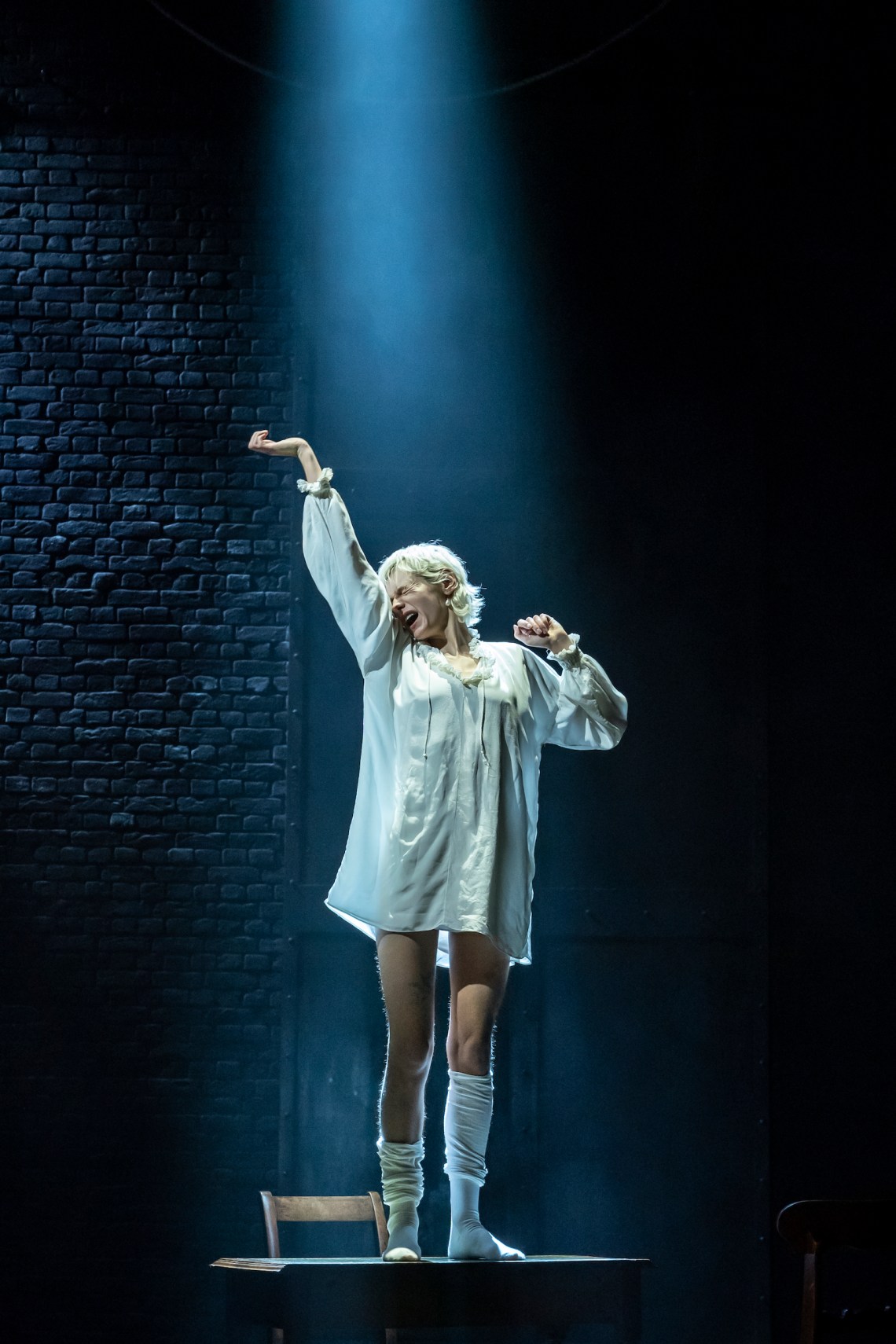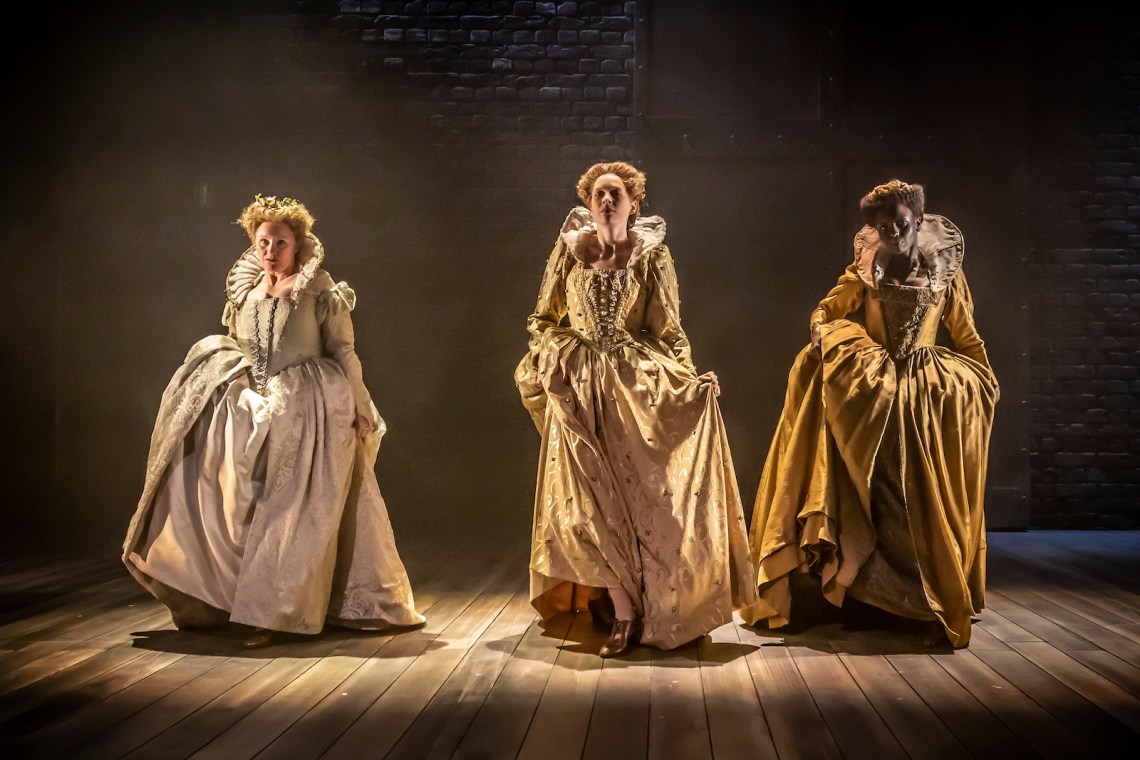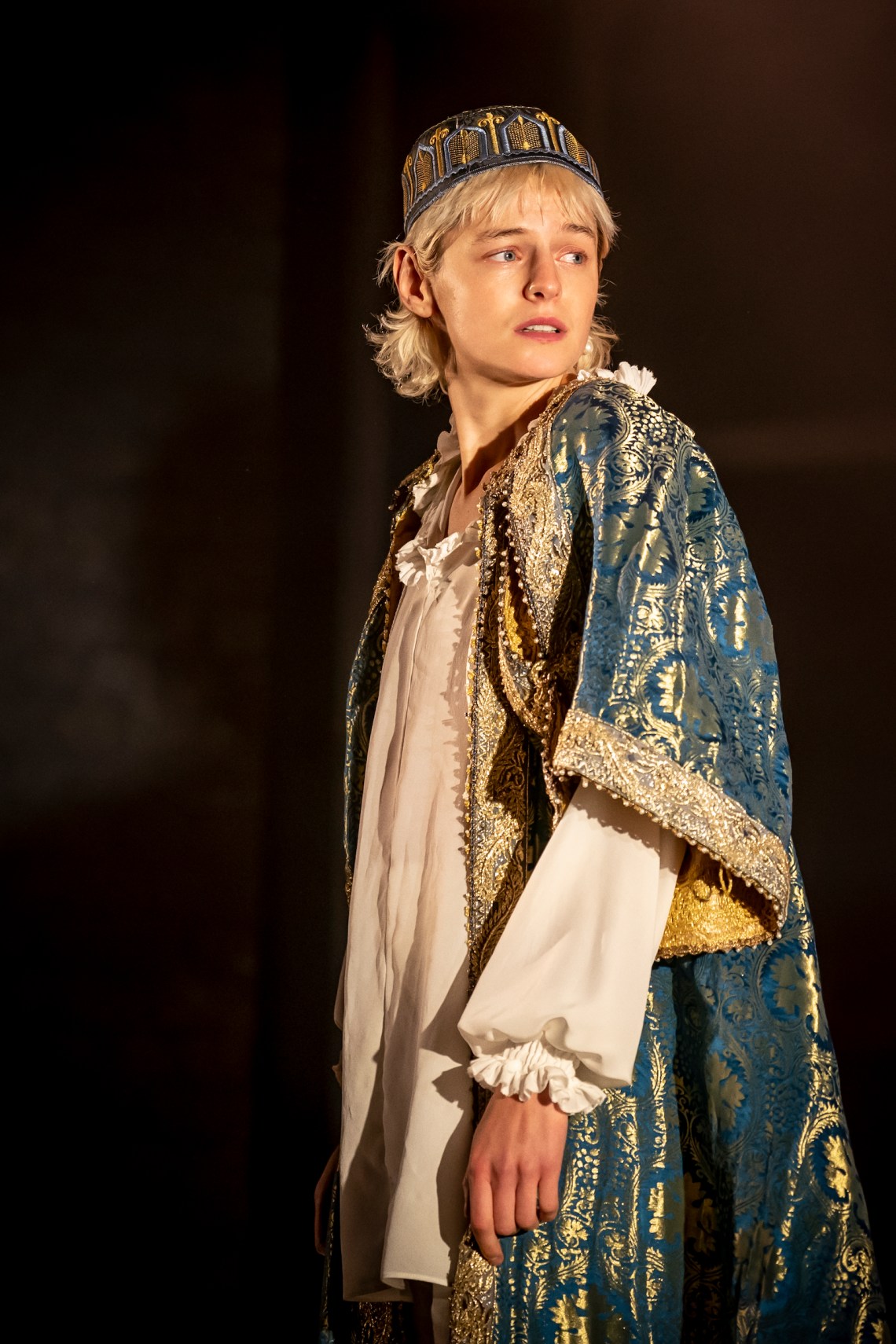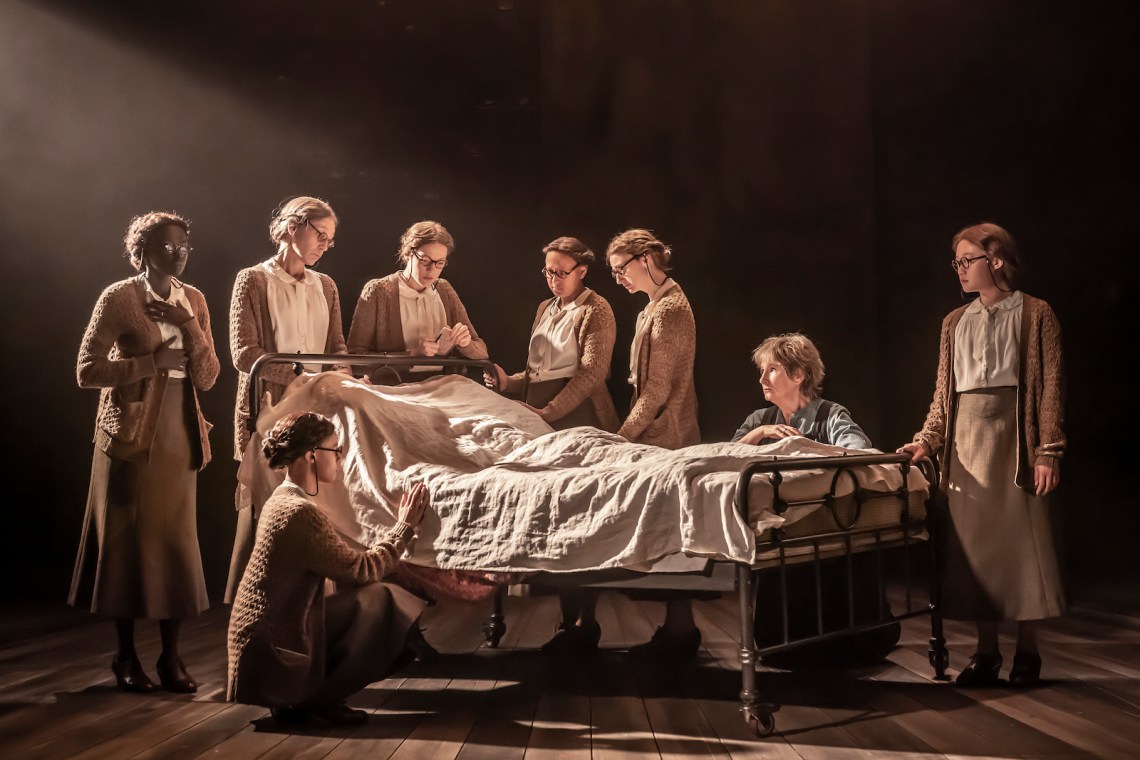Late one night toward the end of September 1927, wavering between consciousness and sleep, Virginia Woolf came up with an idea for a book: to sketch, “like a grand historical picture, the outlines of all my friends.” The next morning, she recorded the thought in her diary. “It might be a most amusing book. The question is how to do it.” By December, midway through the third chapter of what would become Orlando, she was still puzzling over the right tone. It would have to be “half laughing, half serious,” she wrote, “with great splashes of exaggeration.”
By March she had transformed that nocturnal vision into an extravagantly novelized biography in mock-epic style that unfolds between the Elizabethan era and the present day. Over the course of the novel, the young aristocrat at its center swaps milieus, costumes, countries, and genders. First a young philanderer and protégé of Elizabeth I, then a diplomat in Constantinople under Charles II, Orlando awakens from a seven-day sleep to live out the next few centuries as a woman, suffering among the prudish and polluted Victorians before reaching the world-weary age of thirty-six in 1928, more or less the moment Woolf put pen to paper.
A new play based on Orlando at the Garrick Theatre in London, adapted by Neil Bartlett and directed by Michael Grandage, pursues Orlando, played by an impishly endearing Emma Corrin, through each of these epochs—each “spirit of the age,” in Woolf’s words. The costume designer Peter McKintosh takes full advantage of the novel’s dance across time, with sumptuous changes of dress that often take place before the audience’s eyes. In addition to Orlando and the long-suffering servant Mrs. Grimsditch (Deborah Findlay), there are nine cast members who each play at least two or three roles across the centuries. Their costume swaps offer a kind of theatrical vindication of the novel’s theory “that it is clothes that wear us and not we them.” Orlando first bursts onto the stage in a short, frilly nightgown, a young man for now, before Mrs. Grimsditch wheels in a clothes rack from the wings to cloak him in Elizabethan garb. Next to arrive is the wheezing, aged Queen (Lucy Briers). Her limping presence seems to nod to Quentin Crisp’s far campier take in Sally Potter’s 1992 film adaptation. With a twinge of envy and bitterness, Queen Elizabeth cautions Orlando that his flirtatious court intrigues are a waste of time: “beware the years.”
But Orlando’s temporality is bendier and less portentous than that memento mori suggests. Orlando blithely rejects a series of potential lovers, who prance by in a RuPaul-style parade, before settling more or less haphazardly on the noble Euphrosyne. In a blink of lovers’ time, clouds of mist billow over the stage, transporting us to England’s Great Frost of 1607-1608. As Orlando strolls with Euphrosyne across the frozen Thames, he is distracted by an androgynous skater, the Russian Princess Sasha (more precisely, “Marousha Stanilovska Dagmar Natasha Iliana Romanovitch”). Now it is his turn to be charmed, bewitched, and eventually heartbroken.
*
If Orlando began as a thought experiment for a collective biography, it ultimately became a more particular tribute. Its focus narrowed to “Vita,” as Woolf wrote in her diaries, “only with a change about from one sex to another.” Vita Sackville-West and Woolf had met in 1922; by 1925 they had embarked on an affair of intensifying, volatile intimacy. Married to the diplomat Harold Nicolson, Sackville-West embraced a partnership that today might be called an open marriage, which left her free to pursue other women and him other men. Sackville-West once praised Woolf, in a letter to her husband, for her “combination of that brilliant brain and that fragile body”; she was “so independent in all mental ways, so dependent in all practical ways.” In turn, Virginia saw someone utterly unlike herself in Vita, someone admirably at home in her own body.
A cross-dressing “Sapphist,” Woolf called her (a word Woolf never used for herself). Yet Sackville-West was equally at ease in a conservative domestic sphere, as a mother and head of household: “her being in short (what I have never been) a real woman.” Woolf’s diaries bear evidence of various attempts to make this woman out in prose. Vita: “very opulent, in her brown velvet coat.” Vita: “very free & easy, always giving me great pleasure to watch, & recalling some image of a ship breasting a sea, nobly, magnificently, with all sails spread, & the gold sunlight on them.”
Woolf’s descriptions of Orlando both recall and further aestheticize Vita’s mysterious power, “compounded of beauty, birth, and some rarer gift, which we may call glamour and have done with it.” In that light Corrin is a particularly apposite choice for the Garrick production. A darling of the fashion and media world since their breakout role as Princess Diana in The Crown in 2020, Corrin was recently featured in the August 2022 issue of Vogue as the magazine’s first nonbinary cover star. They inhabit the role with a lightness at once sprightly and searching. The performance echoes Woolf’s account of writing Orlando as a “pure delight…which I enjoy as much as I’ve ever enjoyed anything.” Little wonder, then, that characters of various genders all fall promptly in love with Orlando, from the Archduchess Harriet, whom he flees abroad to escape (and who makes a return in the eighteenth-century scenes, this time to the female Orlando, as an Archduke in disguise), to the Marmaduke Shelmerdine: the two get engaged after a courtship of several minutes. The pressures of the Victorian marriage market, we’re reminded, were intense.
Advertisement
By Orlando’s return to England in the early eighteenth century, women—unlike in David Garrick’s own era, we’re told, with a nod to the venue—are now allowed to act onstage. On the other hand, she’s now become the object of several lawsuits. As “a) a woman, b) presumed dead” (each of which “amounts to the same thing”), she can no longer stake a claim to her beloved estate. Struggling in her corset, she recognizes “with a start the penalties and privileges of her position.” In the production cross-dressing is a form of performance and play, but in this section disguising herself as a man also becomes a strategic form of dissembling, the only way Orlando can continue wandering through London at her will.
*
Over Bartlett’s forty-year career he has focused on queer lives and histories as an author, translator, playwright, and director; obliquely or head on, his shows in the 1980s addressed the AIDS crisis in the UK. In plays like A Vision of Love Revealed in Sleep (1987) and books like Who Was That Man?: A Present for Mr. Oscar Wilde (1988), Bartlett foregrounded nineteenth-century figures that later generations could recognize as queer, tracing a relatively continuous tradition of non-normative forms of sexuality from Victorian London to the present day.
Here, his script takes a cue from the novel’s jaunty tone, with a few mischievous additions of its own (such as a reference to a line—“Nobody’s perfect”—from Some Like It Hot). At another point one of the eighteenth-century sex workers breaks the fourth wall to describe herself as the production’s compulsory but “incidental working-class character.” Woolf’s jaundiced but painstaking depiction of the Victorian era in which she was born (the “spirit of the nineteenth century was antipathetic to [Orlando] in the extreme, and thus it took her and broke her”) is summed up more neatly here: the nineteenth century was a “complete waste of time for women.” But before we know it we are in 1928, with its cars, lifts, and departments stores, with women now able to vote and own property. “Can I get divorced?” Orlando asks the chorus—a group of nine identically dressed Virginia Woolfs, each orbiting the stage, brows furrowed, pen and notebook in hand. “Not yet,” they somewhat ponderously reply. Careening between the slapdash manner of a parlor game and a more self-conscious spirit of critique, the production, which runs under ninety minutes, sometimes feels overly brisk.
Then again, neither had Woolf been quite sure of her tone. She fretted in March 1928 that Orlando “may fall between stools, be too long for a joke, & too frivolous for a serious book.” Among the adaptation’s many cuts is the novel’s send-up of literary culture from Pope and Addison to the present day: there is, for instance, Nicholas Greene, the Grub Street peddler who plays the long game to become a distinguished man of letters by the Victorian age. Orlando also writes, though not very well, despite tinkering for literally centuries over a poem entitled “The Oak Tree.”
“As for her poetry…she never breaks fresh ground,” Woolf wrote in her diaries. “She picks up what the tide rolls to her feet.” As Hermione Lee notes in her biography of Woolf, in the 1920s it was Sackville-West who was the better-known writer, and part of the ambivalence of Woolf’s novelistic tribute lies in such mingled attraction, competition, and disparagement. As Woolf’s contemporary Sigmund Freud might have said, there is nothing more serious than a joke.
The adaptation downplays such ambiguities in favor of a more forthright celebration of Orlando as triumphant hero/ine. “I have tried,” she declares toward the end, “to honor happiness, to obey desire, in whatever form it came—to accept that there may be more forms, and stranger, stronger than we know.” In other words, ways of being outside the gender binary are hardly new. The reminder is especially welcome as attacks on trans people continue apace in the United States and Britain is seized by anti-trans moral panics of its own.
Advertisement
*
Scholarly interpretations of Orlando once tended to focus on questions of same-sex desire, but beginning in the 1980s and 1990s feminist and queer scholarship came to celebrate the protagonist’s gender fluidity. Other readers have wondered whether Orlando “is” a trans woman: the character does after all undergo a sex change, even if its causes remain underdetermined. The feminist scholar Margaret Homans recently argued that Orlando’s flights of fantasy subvert such a straightforward reading—less because Woolf didn’t have access to such language than because of the novel’s destabilizing style and form.1 This is a biography that makes fun of what Elizabeth Hardwick called that “scrofulous cottage industry,” toggling between insisting on the self’s essential continuity and allowing the same self to meander and dissemble. By breaking from conventional biography and realist narration, Woolf makes it difficult to support durable, mimetic identity claims for her protagonist, including those of gender identity.
The novel is narrated by a third-person biographer, a parody of the self-serious chronicler of the Lives of Great Men—including those in the multivolume Dictionary of National Biography edited by Woolf’s father, Leslie Stephen. Just as that great-man style of biography is gendered, Homans points out, so are all the other components of the “pastiche of period styles” that make up Orlando, from Romantic fantasy to Victorian verse. John Ruskin’s anti-industrial polemics in purplish prose about the “storm-cloud of the nineteenth century,” for instance, are echoed in Woolf’s lines on the “damp” that “now began to make its way into every house—damp, which is the most insidious of all enemies, for while the sun can be shut out by blinds, and the frost roasted by a hot fire, damp steals in while we sleep; damp is silent, imperceptible, ubiquitous.” For Homans, the novel’s “transgender resonances” are to be found not by focusing on the character of Orlando—as Grandage and Bartlett do here, following other well-known adaptations like Potter’s and Sarah Ruhl’s—but rather by listening for these “competing, collaborating,” and multiply gendered registers “in the narration itself.”
The nine Virginia Woolfs seem to be Bartlett’s attempt to convey this complex tug-of-war between narrative forms onstage. In his account the device arose from “the idea of a woman passed through a prism, refracted into different and conflicting elements.” If we had seen the actors quarreling or debating, this sense of multiple conflictual selves—and even differently gendered voices—might have been communicated to more satisfying effect. Instead, in the tradition of a classical chorus, the actors tend to speak as one. They stitch together Woolf’s narration and gloss the action. At one point they participate in a dance that serves as a transition from one century to the next. This too produces a somewhat jarring tonal contrast with the novel, which pokes fun at the biographer’s reliance on chronological devices like “and then”—including a swipe at the “Time Passes” section of Woolf’s own To the Lighthouse, the novel she finished the previous year.
But if the production perhaps inevitably forgoes the complexities of the novel’s narration, there are other affordances that it can and does exploit. The novel satirizes Woolf’s own process of writing to the moment: “In fact it was ten o’clock in the morning. It was the eleventh of October. It was 1928. It was the present moment.” The Garrick production closes with a more sober version of these deictics, in an extended back-and-forth between Orlando, Mrs. Grimsditch, and the chorus:
Mrs G: Where are you?
Orlando: I’m…I don’t know!
Virginia: You’re here.
Orlando: All right…I’m here.
Initially uncertain, Orlando’s replies give way to a more insistent call and response:
Orlando: What’s my favorite time?
Mrs. G: Right now!
The Virginias: Now…
Orlando: Now. Now!
The closing scene risks falling flat or coming off as precious and overwrought, but Corrin’s rich delivery rescues it. In their hands “I’m here” recalls the activist refrain “We’re still here,” which calls attention to the presence, even in hostile spaces, of people marginalized, ignored, or attacked.
Despite its focus on selfhood (“Who am I?” Orlando queries the audience more than once in the Garrick production), Orlando is also a novel about the writerly challenge of imagining other lives—about the extraordinary lengths one person might go to try to understand another, about the hungers and failures of intimacy. Orlando’s biographer acknowledges that his subject’s “great variety of selves” are ultimately beyond his ken, for “a biography is considered complete if it merely accounts for six or seven selves, whereas a person may well have as many thousand.” Even an exhaustive doorstop biography can hardly claim to encompass the meaning of its subject’s life. How could it? The play’s last few minutes exchange the biographer’s efforts to fully inventory his subject’s selves for another model of intimacy, one based not on complete knowledge but on proximity in a given here and now. They revel in that strange theatrical pact: repeated but ever-changing presence, a provisional but pleasurable sharing of space.





